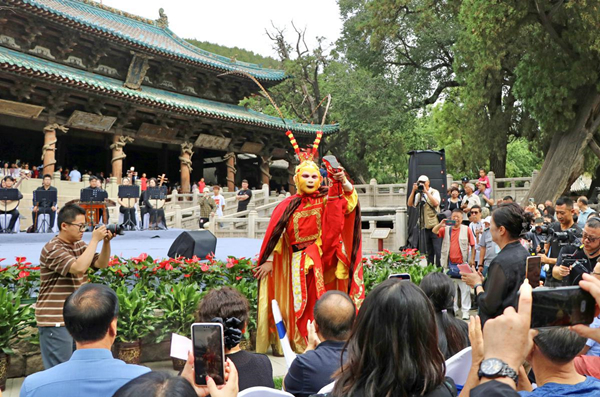Shanxi's ancient sites thrive after 'Black Myth: Wukong' boost
Updated: 2024-09-19

An actor dressed like Sun Wukong, or the Monkey King, performs at the Jinci Museum in Taiyuan, Shanxi province. [Photo provided to chinadaily.com.cn]
During the three-day Mid-Autumn Festival holiday, tourists flocked to cultural and historical sites like Shanxi province's ancient buildings and museums.
Shanxi is well-known for having the most ancient buildings of any province in China.
Some of these locations gained attention after appearing in the game Black Myth: Wukong, released in August. The Yungang Grottoes, Xuankong Temple, the Yingxian Wooden Pagoda and other sites in Shanxi have all benefited from the Black Myth bump.
"In response to the increasing number of visitors, we expanded our volunteer service team to manage the flow of tourists," said Yin Zhenxing, curator of the Colored Sculpture and Mural Museum at the Yuhuang Pavilion in Jincheng. "We divided our hours of operation into eight time slots, with each slot limited to 300 reservations, to provide the best possible experience."
Visitor Wang Yifan said she was greatly impressed by the Twenty-eight Constellations Colored Sculptures at the Yuhuang Pavilion.
"I took many photos of each lifelike sculpture and will share them with my parents," she said.
Jincheng's Tiefo Temple received over 7,000 visitors during the holiday, according to the local government.
"During the visit to the Tiefo Temple, I was amazed by ancient people's unique clay sculpture craftsmanship, such as the intricate patterns, expressions and forms," said tourist Wu Jianwei.
The Jincheng government stated that leveraging the popularity of Black Myth: Wukong, they are fully committed to providing excellent service and ensuring the safety of the culture and tourism market for the coming National Day holiday.
Yan Yun contributed to the story.



